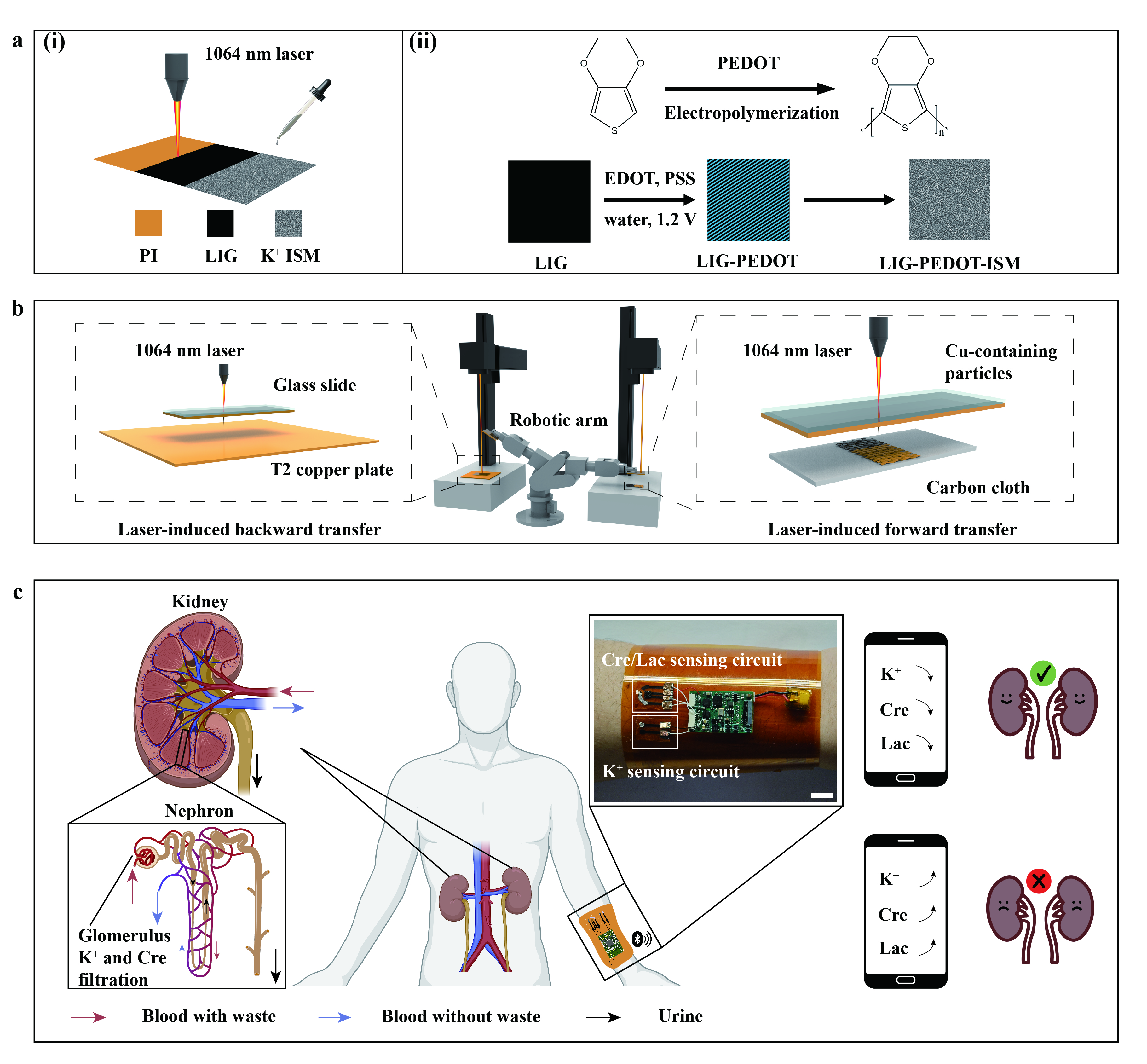The research team from the Division of Integrative Systems and Design (ISD) of HKUST has developed an advanced portable electrochemical sensor for non-invasive human kidney function monitoring. This technological breakthrough can be a potential cost-effective solution for healthy people and kidney disease patients.
The aging population and the rising prevalence of diseases like diabetes and hypertension have contributed to an alarming increase in chronic kidney disease worldwide. It is estimated that approximately 843 million people globally suffer from this chronic, non-communicable condition, which significantly impairs human health and quality of life. Currently, clinicians rely on invasive blood withdrawal methods to measure biomarkers like urea and creatinine in order to assess the status of kidney failure patients. However, invasive blood withdrawal and complex testing procedures pose significant challenges, especially in a populous country like China where frequent monitoring of kidney function remains challenging.
To address this challenge, the ISD research team under the guidance of Prof. Mitch Guijun LI, Assistant Professor of ISD, has designed and demonstrated a novel fabrication method. This includes the development of automatic modules, a three-electrode Laser-induced Graphene (LIG) circuit with the hydrophilic-hydrophobic interface, and a Kelvin compensating connection for the manufacturing of a wearable sensor, which can be used to monitor kidney function using sweat clinically. These methods are also applicable for preparing many other functional electrodes and electrochemical circuits for other applications, providing new ideas and approaches for developing wearable sensors.
The impact of the multifunctional portable sensor is twofold. Firstly, it can empower healthy individuals to detect kidney diseases early, enabling timely preventive action. Secondly, it can facilitate kidney disease patients in monitoring their kidney health more easily through non-invasive sampling methods, thereby allowing doctors to provide more appropriate treatment.
“The widespread adoption of this technology could have significant positive implications for public health, especially in large countries with limited access to frequent kidney function monitoring”, Prof. LI said.
The co-first author HUANG Yangyi, a Year 2 PhD student of ISD, added, “We are currently exploring collaborations with kidney departments in hospitals in Hong Kong and Mainland China to accelerate the clinical application of our non-invasive multifunctional portable sensor.”
The research paper titled “Multifunctional laser-induced graphene circuits and laser-printed nanomaterials toward non-invasive human kidney function monitoring” has been published on Biosensors & Bioelectronics, a prime interdisciplinary journal focusing biological materials and designs in novel diagnostic and electronic devices.








